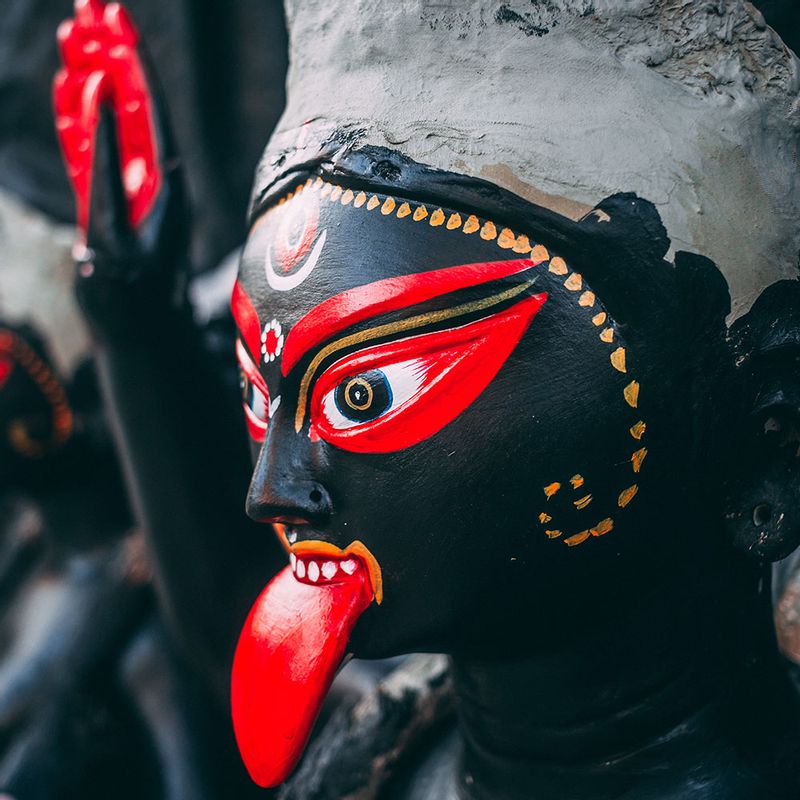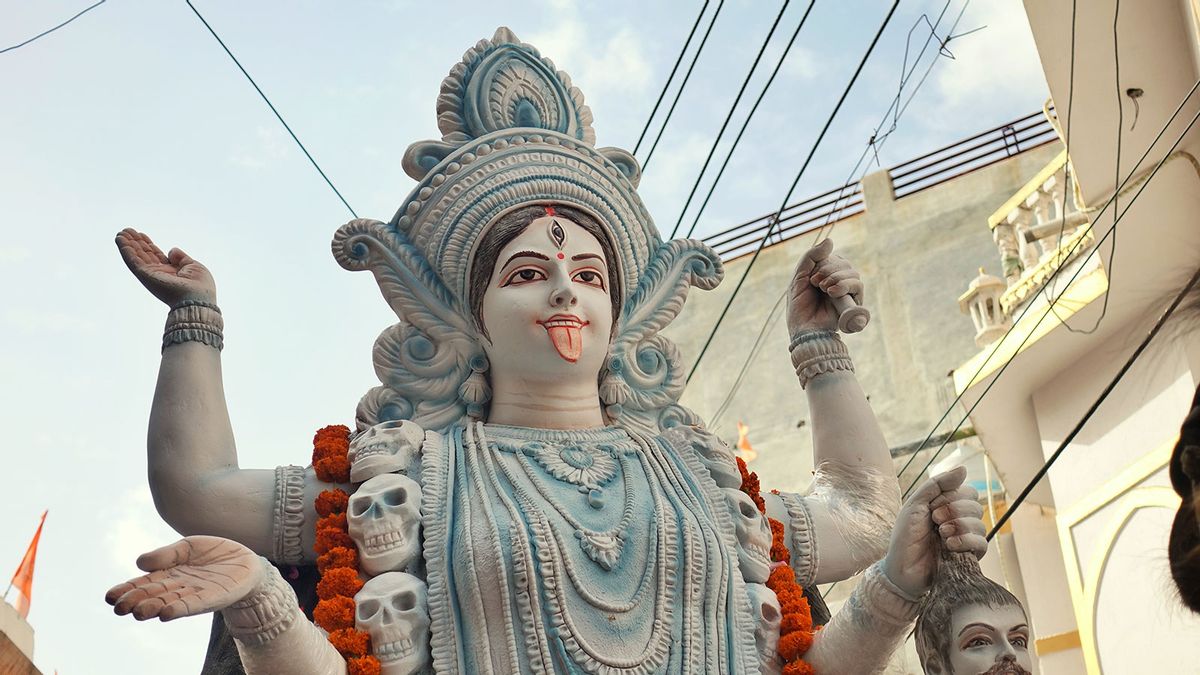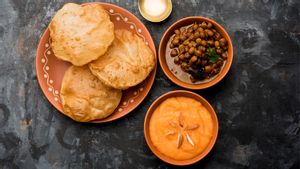The day before Kali Puja or Bhoot Chaturdashi has always been the most thrilling in a Bengali household. Something of a homegrown Halloween, it’s the day the other-worldly creatures are thought to descend upon earth.
One way to ward them off is to quietly eat the Choddo Shaak, a mix of 14 leafy greens that are considered mandatory on this day. “If you don’t eat it, the ghosts will get you,” elders would warn. In the evening, we helped in the customary lighting of 14 lamps to honour 14 generations of our ancestors. The lamps were also supposed to keep the evil spirits at bay, or at least that’s what we were told.
The enigma of Kali

A sense of mystery and mysticism always surrounds Kali Puja, celebrated across Bengal (as also in other Eastern states of Assam and Odisha) on the new moon day in the lunar month of Kartik (in October), when the rest of the country celebrates Diwali.
The dark-skinned goddess with her garland of skulls and blood-stained tongue evokes fear and admiration in equal measure. Goddess Kali is, on one hand, the destroyer of evil and the devourer of time. On the other, she is also a benevolent mother who protects her children from evil. It is in both her forms—fierce and benign—that she is worshipped.
Incidentally, according to most scholars, this annual, autumnal adulation of Kali gained popularity only in the eighteenth century. Raja Krishna Chandra Ray, a zamindar of Nadia, is said to have popularised Kali Puja in Bengal. He ordered his subjects to observe the festival or face severe consequences.
In fact, Kali’s metamorphosis from the terrifying blood-thirsty goddess worshipped on cremation grounds by Tantric adepts into a smiling, benign mother worshipped by householders is also a more recent phenomenon. The first community or Barowari Kali Pujas perhaps happened in the early 1900s.
Kali Puja in Kolkata
In Kolkata, Kali Puja pandals might not boast the pageantry of Durga Puja pandals, nor do they rope in massive crowds, yet the modest puja mandaps where Shyama Sangeet mingles with the sound of the dhaak have their own charm.
However, the most fun pandals are those with the dark, creepy setting complete with cheesy sound effects including howling foxes, chirping crickets and cackling ghosts. Besides, Kali is worshipped in a myriad form across Kolkata’s pandals—the fearsome Chamunda Kali with her blood-red eyes and long tongue dripping blood, the gentle, benign Shyama Kali, Kali with a thousand hands or ten heads.
While there are numerous Kali Puja pandals all over the city, there are quite a few famous ones with an interesting history or illustrious heritage:
- North Kolkata has a few famed Kali Pujas like the Naba Jubak Sangha Kali Puja, better known as Fata Keshtor Kali Puja, after its founder Krishna Chandra Dutta
- The Amherst Street Sadharan Kali Puja is famous as Somen Mitra’s Puja
- In South Kolkata’s Chetla area, there’s a Kali Puja at every turn
- The Chamunda Kali Puja at ABS Sporting
- Shmashan Kali Puja at the Keoratala Burning Ghaat is quite the crowd puller
However, unlike Durga Puja, Kali Puja continues to be a more intimate affair, focused on the devotion and adoration of the mother. And one of the best ways to experience the Puja is at one of the several Kalibaris in the city like Thanthania (Bidhan Sarani), Firingee (Bow Bazaar) or Lake Kali Bari.
If crowds don’t intimidate you, experience the electrifying atmosphere at the Kalighat Temple or drive down to witness Kali Puja at the Dakshineshwar Temple.
Holy sustenance
Many households host Kali Puja with pomp and piety in equal measure. The puja typically performed according to Tantric rituals is a night-long affair starting only after midnight. Devotees observe a severe fast throughout the day and break it only after they have offered pushpanjali to the Goddess in the wee hours of the morning.
The highlight of the morning after is the Pujor Bhog which could be anything from runny khichuri and spicy labra (a mishmash of assorted vegetables) to ghee-soaked pulao, puffy luchi and rich creamy paayesh. And then there’s the fish, fried or curried and mangsho or goat meat.
Bengal’s Shakta tradition—the worship of the divine feminine and the supreme power—approves the offering of fish and meat to the Goddess. The Tantric belief system, in particular, emphasises the offering of blood to the Mother Goddess through ritualistic animal sacrifice or bali dana.
Bali (mostly of goat, though buffaloes, sheep and even rams were once sacrificed) is still prevalent in some Kali temples across Bengal and in certain old households where Kali is worshipped in her fiercer form. The blood and head of the sacrificial animal are offered to the Goddess, while the flesh from the rest of the body is distributed among devotees as blessed meat.
This meat must mandatorily be cooked without a trace of onions or garlic that are considered tamasic, unbefitting for ritualistic food. Instead, it’s cooked into a light but flavourful curry with spices like cumin, asafoetida, ginger and fragrant garam masala. Since onions and garlic are considered non-vegetarian in Bengal, their absence gives the dish the curious name Niramish Mangsho, which literally means ‘vegetarian meat’. It’s delicious nonetheless and polished off with fluffy luchis.




